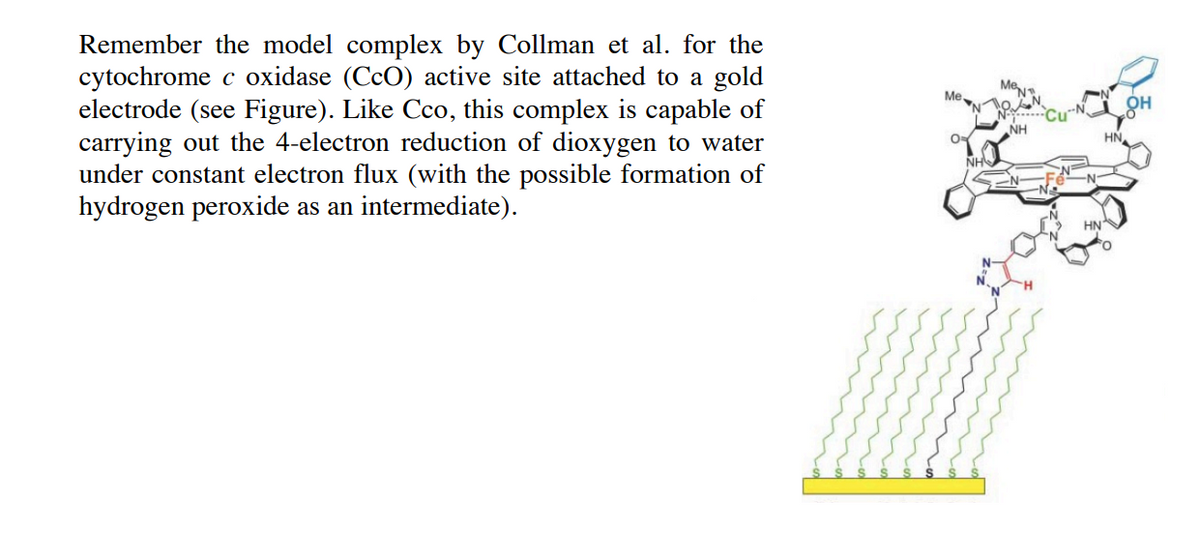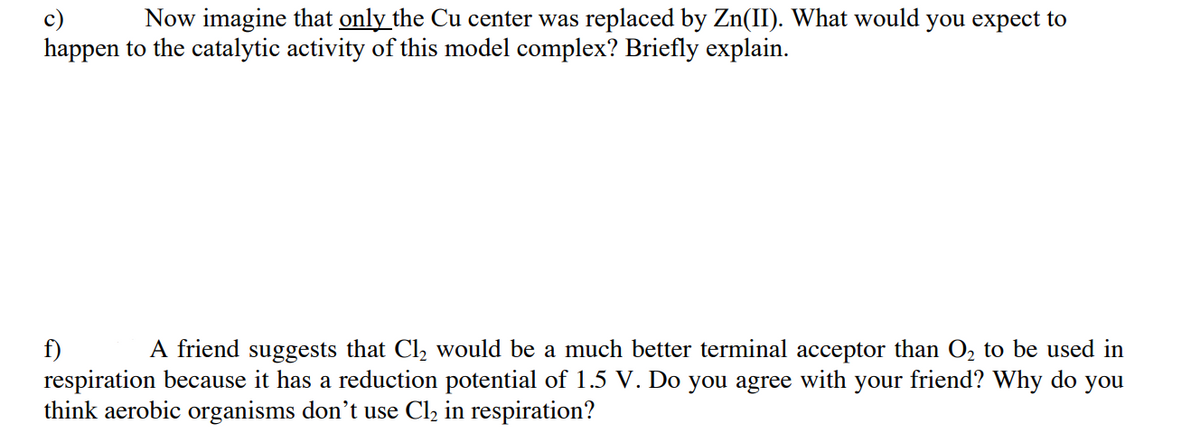Now imagine that only the Cu center was replaced by Zn(II). What would you expect to happen to the catalytic activity of this model complex? Briefly explain. A friend suggests that Cl, would be a much better terminal acceptor than O2 to be used in f) respiration because it has a reduction potential of 1.5 V. Do you agree with your friend? Why do you think aerobic organisms don’t use Cl2 in respiration?
Now imagine that only the Cu center was replaced by Zn(II). What would you expect to happen to the catalytic activity of this model complex? Briefly explain. A friend suggests that Cl, would be a much better terminal acceptor than O2 to be used in f) respiration because it has a reduction potential of 1.5 V. Do you agree with your friend? Why do you think aerobic organisms don’t use Cl2 in respiration?
Biochemistry
6th Edition
ISBN:9781305577206
Author:Reginald H. Garrett, Charles M. Grisham
Publisher:Reginald H. Garrett, Charles M. Grisham
Chapter20: Electron Transport And Oxidative Phosphorylation
Section: Chapter Questions
Problem 21P
Related questions
Question

Transcribed Image Text:Remember the model complex by Collman et al. for the
cytochrome c oxidase (CcO) active site attached to a gold
electrode (see Figure). Like Cco, this complex is capable of
carrying out the 4-electron reduction of dioxygen to water
under constant electron flux (with the possible formation of
hydrogen peroxide as an intermediate).
Me
HỒ
HN
NH
NH
EN-
N

Transcribed Image Text:Now imagine that only the Cu center was replaced by Zn(II). What would you expect to
c)
happen to the catalytic activity of this model complex? Briefly explain.
A friend suggests that Cl, would be a much better terminal acceptor than O, to be used in
f)
respiration because it has a reduction potential of 1.5 V. Do you agree with your friend? Why do you
think aerobic organisms don't use Cl2 in respiration?
Expert Solution
Step 1
Cytochromes c oxidase: This complex is seen in Mitochondria during the oxidative phosphorylation process.
This transfer of a proton from the mitochondrial matrix to the inner membrane of mitochondria and reduction of electron carrier and reduction of oxygen to water
Trending now
This is a popular solution!
Step by step
Solved in 2 steps

Recommended textbooks for you

Biochemistry
Biochemistry
ISBN:
9781305577206
Author:
Reginald H. Garrett, Charles M. Grisham
Publisher:
Cengage Learning

Biochemistry
Biochemistry
ISBN:
9781305577206
Author:
Reginald H. Garrett, Charles M. Grisham
Publisher:
Cengage Learning